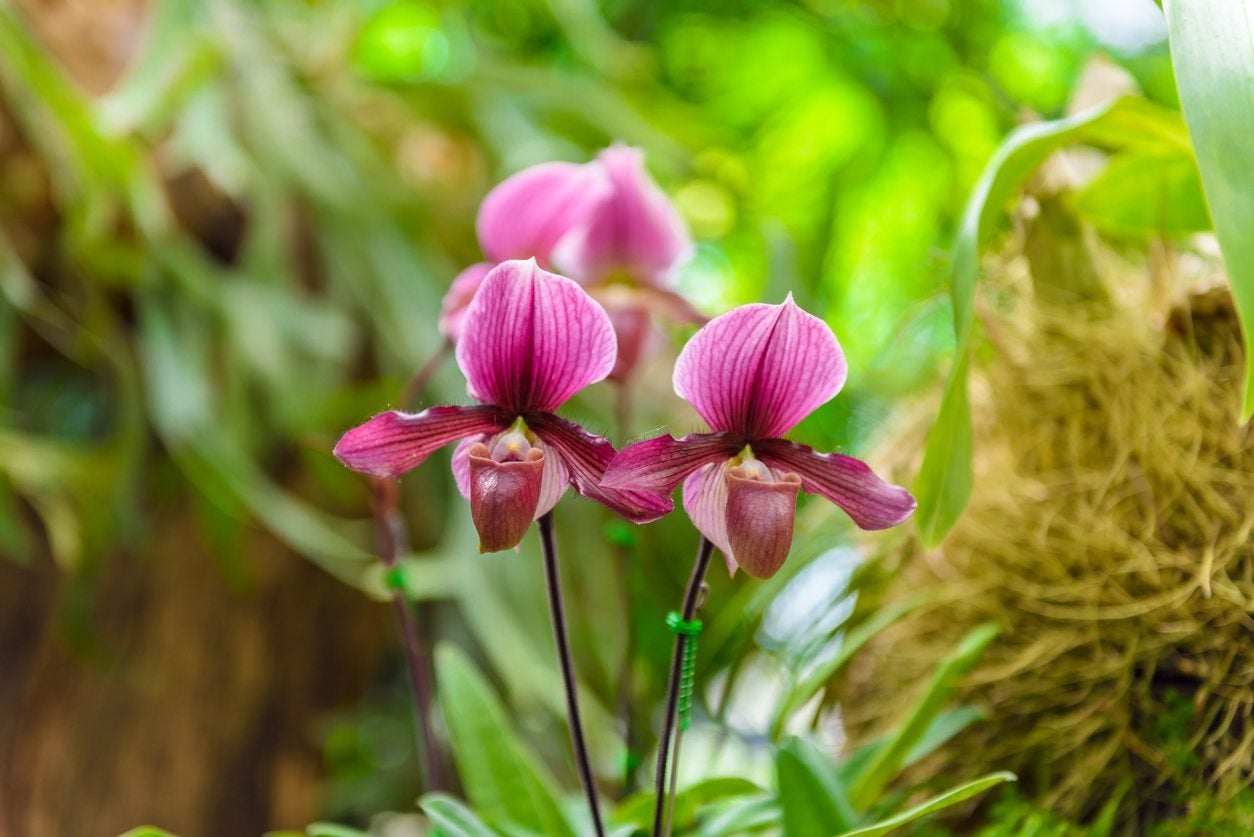Paphiopedilum Care: Growing Paphiopedilum Terrestrial Orchids

Orchids in the genus Paphiopedilum are some of the easiest to care for, and they produce beautiful, long-lasting blooms. Let’s learn about these attractive plants.
What are Paphiopedilum Orchids?
There are about 80 species and hundreds of hybrids in the Paphiopedilum genus. Some have striped or variegated leaves, and others have flowers with spots, stripes, or patterns. Many of these varieties are prized by collectors. Paphiopedilum orchids are nicknamed “slipper orchids” because of the unusual shape of their flowers. However, they are different from the North American wildflowers known as lady’s slipper orchids. Most Paphiopedilum species are terrestrial orchids, which means they grow in soil. Terrestrial orchids should be grown in a pot, not in a hanging mount as is sometimes used for tree-dwelling epiphyte orchids. Growing Paphiopedilum terrestrial orchids outdoors is also possible in tropical and subtropical climates.
How to Grow a Paphiopedilum Orchid
Paphiopedilum care involves providing proper light levels, water levels, soil conditions, and maintenance. Use a terrestrial orchid potting mix with your Paphiopedilum orchid plant. Or make your own by mixing fir or other conifer tree bark with materials like sphagnum moss, perlite, and sand. Be sure the mix is well draining, and that the container has enough drainage holes. Repot after two or three years as the bark breaks down. These plants grow well under typical indoor light conditions, either near a window or under fluorescent lighting. Don’t keep them in the intense direct sunlight of a south-facing window, and don’t expose them to temperatures over 85 degrees F. (30 C.) for long periods. Too much heat or strong sunlight could burn the leaves. Water your Paphiopedilum orchid plant with room temperature water and allow water to flow out through the drainage holes to flush the soil. Don’t allow the soil to dry out, but make sure it does not become waterlogged. Evenly moist, well-draining soil is the goal. In winter and in dry climates, increase the humidity of the air around the plant by misting, using a humidifier, or placing a tray of water nearby. Fertilize your Paphiopedilum orchid plant once a month with a 30-10-10 liquid fertilizer diluted to half strength, then water well. These are often sold as orchid fertilizers. Check your orchid plant for insects periodically.
Sign up for the Gardening Know How newsletter today and receive a free copy of our e-book "How to Grow Delicious Tomatoes".
Ilana Goldowitz Jimenez is a scientific and agricultural writer with a B.S. in Plant Sciences from Cornell University and a PhD in Chemical Biology and Infectious Disease from Harvard University.